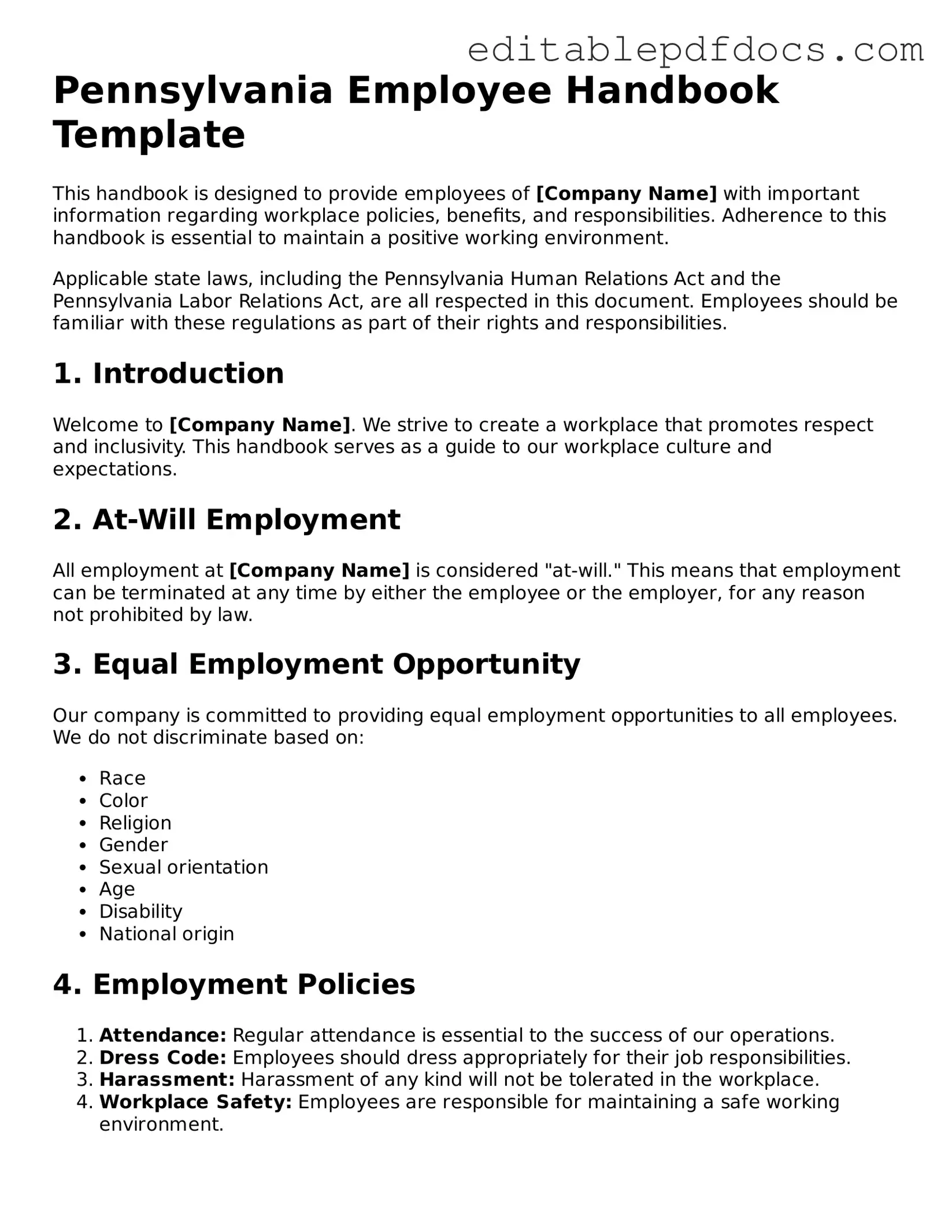Filling out the Pennsylvania Employee Handbook form can be straightforward, yet many individuals make common mistakes that can lead to confusion or issues down the line. One significant error occurs when employees fail to read the entire handbook before signing. Understanding the policies and procedures is crucial. Without this knowledge, employees may inadvertently agree to terms they do not fully comprehend.
Another frequent mistake is neglecting to update personal information. Employees often forget to revise their contact details or emergency contacts. This oversight can lead to communication breakdowns, especially in urgent situations. Keeping this information current is essential for effective workplace communication.
Some individuals overlook the importance of documenting their acknowledgment of receipt of the handbook. Simply signing the form without noting the date or any accompanying comments can create ambiguity. A clear record helps both the employee and employer in case of future disputes regarding policy understanding.
In addition, failing to ask questions about unclear policies is a common pitfall. Employees may feel hesitant to seek clarification, fearing it might reflect poorly on them. However, asking questions is a proactive approach that ensures a better grasp of workplace expectations and responsibilities.
Another mistake is not reviewing the handbook periodically. Policies may change, and employees should remain informed about any updates. Ignoring this can result in unintentional violations of new policies, which could have repercussions.
Some employees also mistakenly assume that all policies apply equally to all staff members. Variations in roles or departments can lead to different expectations and responsibilities. Understanding these distinctions is vital for compliance and performance.
Additionally, individuals might fail to recognize the significance of the handbook in relation to workplace culture. The handbook often reflects the company’s values and expectations. Ignoring this aspect can lead to misalignment between personal and organizational goals.
Lastly, a lack of attention to detail when filling out the form can lead to errors. Simple mistakes, such as typos or incorrect dates, can create unnecessary complications. Taking the time to review the form carefully before submission can prevent these issues.
